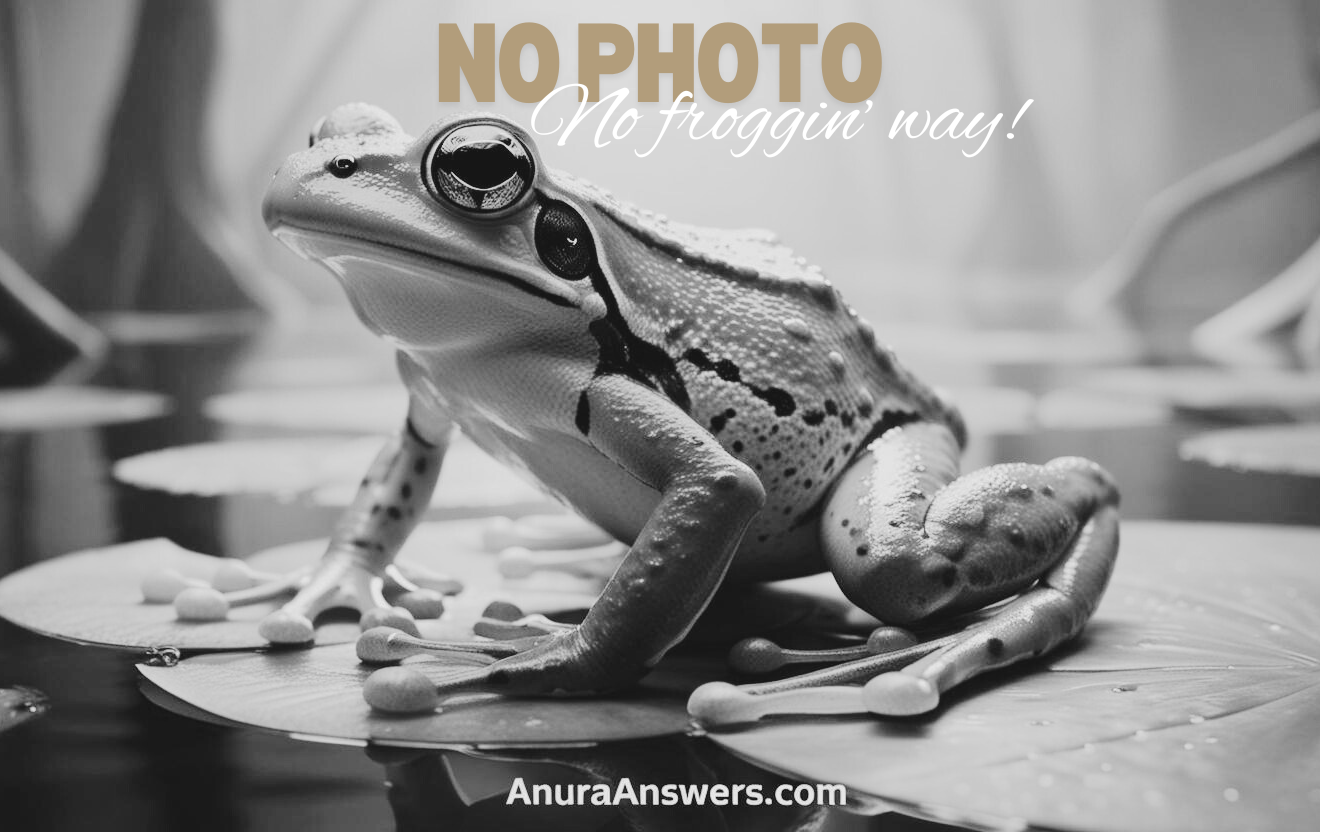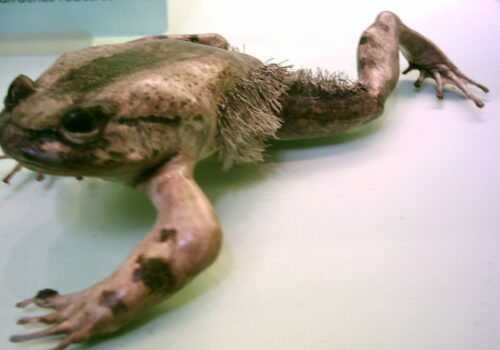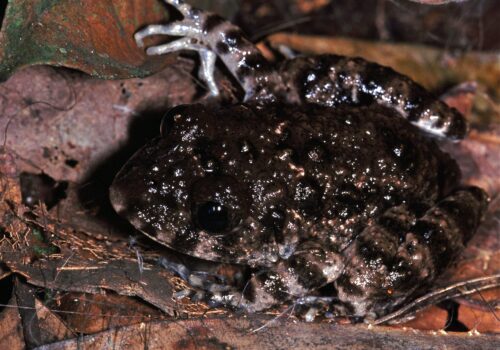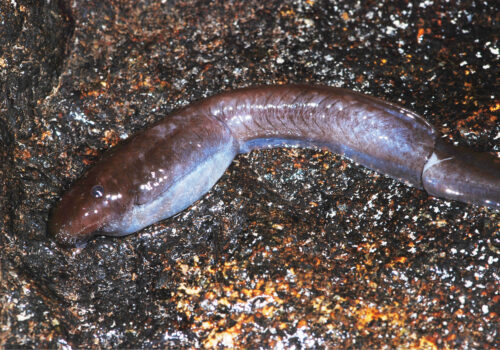- The Secretive World of Leptodactylodon mertensi: Africa's Elusive Amphibian
- Taxonomy and Classification
- Natural Habitat: Exploring the Forest Floors of Central Africa
- Physical Characteristics: Mastering the Art of Camouflage
- Behavior and Life Cycle: Tales from the Forest Floor
- Ecological Role: An Amphibian’s Rite of Passage
- Conservation Concerns: Losing Ground in Changing Forests
- Cultural and Scientific Significance: Amphibians and African Wildlore
- Conclusion: Preserving a Secretive Legacy
The Secretive World of Leptodactylodon mertensi: Africa’s Elusive Amphibian#
Hidden beneath the lush greenery and mist-laden canopies of central African forests lies a fascinating yet seldom-glimpsed amphibian—Leptodactylodon mertensi. Often overlooked amid more famous jungle creatures, this small, secretive frog carries a world of ecological intrigue within its diminutive frame. Known scientifically as Leptodactylodon mertensi, this frog belongs to the family Arthroleptidae, a lineage of amphibians renowned for their subtlety and adaptability.
Unlike their brightly colored tropical cousins, Leptodactylodon mertensi frogs maintain subtle hues and discrete habits, carefully blending into their rainforest surroundings. Yet beneath their discreet exterior lies a captivating narrative, offering us meaningful insights into habitat health, amphibian evolution, and the pressing conservation challenges facing the amphibian world.
Let us venture together into the secretive existence of Leptodactylodon mertensi, exploring their hidden habitats, intricate behaviors, and urgent conservation stories found deep within Africa’s verdant rainforest heart.
Taxonomy and Classification#
Classified within the Amphibia class and the order Anura, Leptodactylodon mertensi belongs specifically to the family Arthroleptidae. This African family comprises diverse frogs predominantly inhabiting dense rainforest ecosystems, known especially for their terrestrial, leaf-litter dwelling habits and cryptic coloration that perfectly matches their surroundings.
The genus Leptodactylodon, known colloquially as Cameroonian forest frogs, includes multiple species uniquely adapted to specific ecological niches. Among them, Leptodactylodon mertensi stands out due to the particular environmental adaptations it has developed in response to its distinctive Central African woodland habitats.
Natural Habitat: Exploring the Forest Floors of Central Africa#
Leptodactylodon mertensi finds its home deep within the lush rainforests of Cameroon and Equatorial Guinea. These frogs thrive specifically on moist, shaded forest floors characterized by dense leaf litter, moss-covered logs, and the occasional rocky streambeds winding through tree roots and vines.
Beneath these towering canopies, layers of decomposing foliage create the perfect shelter and feeding grounds. Humidity is consistently high, providing the moist microclimate essential for skin respiration—a physiological necessity for most amphibians. Small, clear streams, trickling gently through rocky patches, offer suitable breeding sites and nurseries for tadpoles, while fallen foliage and moss carpeting beneath these sprawling canopies shield adult frogs from predators and harsh climatic fluctuations.
Microhabitats and Ecological Niches#
Expertly adapted to their environment, Leptodactylodon mertensi occupies specific microhabitats meticulously matching their biological needs. They often reside concealed amid tangled tree roots or wedged within small rock crevices where humidity remains constant, and predation threats are lower.
This intimate connection to highly specialized niches makes the frog exceedingly sensitive to environmental changes, positioning it as a valuable ecological sentinel capable of signaling shifts occurring even subtly within their forest ecosystems.
Physical Characteristics: Mastering the Art of Camouflage#
Leptodactylodon mertensi is notably small, typically measuring between three to five centimeters in length. What these amphibians lack in size, they make up for in sophisticated physical adaptations perfectly honed through countless generations of natural selection.
Their coloration—the delicate, mottled mix of browns, greens, and grays—is akin to a natural artist’s palette painstakingly blended to resemble damp earth, leaf mulch, and shadowy recesses beneath thick rainforest vegetation. The soft, granular skin texture further enhances camouflage, allowing the frogs to dramatically merge visually and texturally into surroundings—an essential survival strategy against predators and an advantage in ambushing prey.
Adaptations for Survival#
Aside from their exceptional camouflage, Leptodactylodon mertensi showcases sturdy hind limbs adapted for terrestrial navigation and quick bursts of hopping. Unlike the large, webbed feet of purely aquatic frogs, their toes are moderately equipped to cling to damp rock faces and slippery vegetation, allowing quick and silent movements when threatened.
Behavior and Life Cycle: Tales from the Forest Floor#
Leptodactylodon mertensi demonstrates fascinating but under-documented behavior due largely to their elusive nature. Traditionally nocturnal, these frogs spend daylight hours safely concealed under cover, emerging cautiously in the night to forage for insects, spiders, and small invertebrates venturing across the rich rainforest floor.
Courtship Beneath the Canopy#
The beginning of the rainy season marks the start of an intriguing courtship display, with males emitting soft yet resonant calls from hidden alcoves near small forest streams or damp pools. These gentle, rhythmic vocalizations echo quietly within the dense vegetation, expertly balancing attraction of mates while minimizing attention from potential predators.
After mating, carefully laid eggs are deposited in shallow pools of slow-flowing streams or secluded crannies with sufficient moisture to guarantee survival. Interestingly, some closely related Arthroleptidae species show direct development, where amphibians metamorphose within the egg, bypassing a free-swimming tadpole stage entirely. Current studies on Leptodactylodon mertensi indicate a traditional tadpole phase in shallow aquatic environments.
Ecological Role: An Amphibian’s Rite of Passage#
Leptodactylodon mertensi, as inconspicuous as it may appear, performs vital roles within its healthy rainforest ecosystems. It contributes significantly through predation on various insects and invertebrates, thereby regulating potential pest populations and contributing to nutrient cycling within the forest nutrient web.
Conversely, the frog itself provides essential prey for a plethora of forest predators, including snakes, birds, and small mammals. This positioning within the heart of intricate ecological webs emphasizes their importance in maintaining balance and ecological resilience of Afro-tropical forests.
Conservation Concerns: Losing Ground in Changing Forests#
According to the International Union for Conservation of Nature (IUCN), Leptodactylodon mertensi is currently classified as “Vulnerable.” Habitat destruction, mainly driven by agriculture expansion, logging activities, and human settlement, presents the most imminent threat to their continued existence.
Moreover, climatic changes pose significant secondary threats, altering rainfall patterns and disrupting breeding cycles. Increased drought frequency and unpredictable precipitation patterns threaten vital pools and streams serving as breeding sites, significantly impacting reproductive success and long-term population stability.
Hope through Conservation Actions#
Fortunately, current conservation measures aimed at habitat preservation through protected areas have provided partial relief. Organizations operating regionally work to educate local communities, highlighting the importance and intrinsic value of conserving such seemingly inconspicuous species to preserve biodiversity and overall forest health.
Cultural and Scientific Significance: Amphibians and African Wildlore#
Although less globally renowned, many amphibians, including ones like Leptodactylodon mertensi, carry weight within indigenous cultural narratives and scientific inquiry alike. Indigenous communities regard frogs as harbingers of rainfall and bountiful harvests, integrating their presence into folklore and spiritual beliefs closely intertwined with natural phenomena.
Scientific explorations probing the genetic and physiological adaptations of elusive rainforest amphibians provide essential knowledge regarding evolution, climate adaptations, and the interconnected impacts humans impose on fragile ecological systems. Thus, although tiny, the quiet existence of Leptodactylodon mertensi asserts considerable influence on maintaining biodiversity and inspiring local stewardship for nature conservation.
Conclusion: Preserving a Secretive Legacy#
Leptodactylodon mertensi exemplifies the hidden natural treasures that linger quietly under leaves and within shadows of African rainforests. Their presence underscores critical initiatives for local and global amphibian conservation and ecosystem management.
Understanding and celebrating the life of such subtle yet critically important species compels us to more mindful coexistence and richer appreciation of the vibrant genetic mosaic found within Earth’s ecosystems. As enthusiasts, students, or conservation advocates, every step we undertake—whether educating, advocating, or directly acting—makes a difference in shaping a sustainable future, ensuring habitats remain intact, functional, and vibrant enough to preserve wonders such as the captivating Leptodactylodon mertensi.










